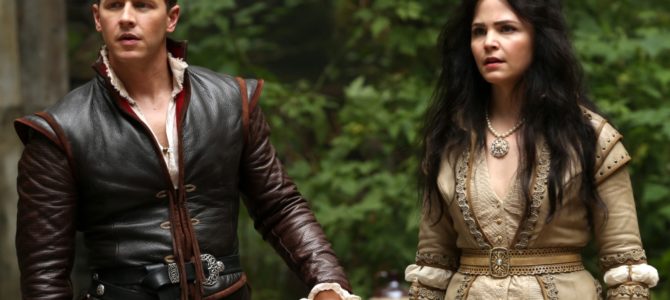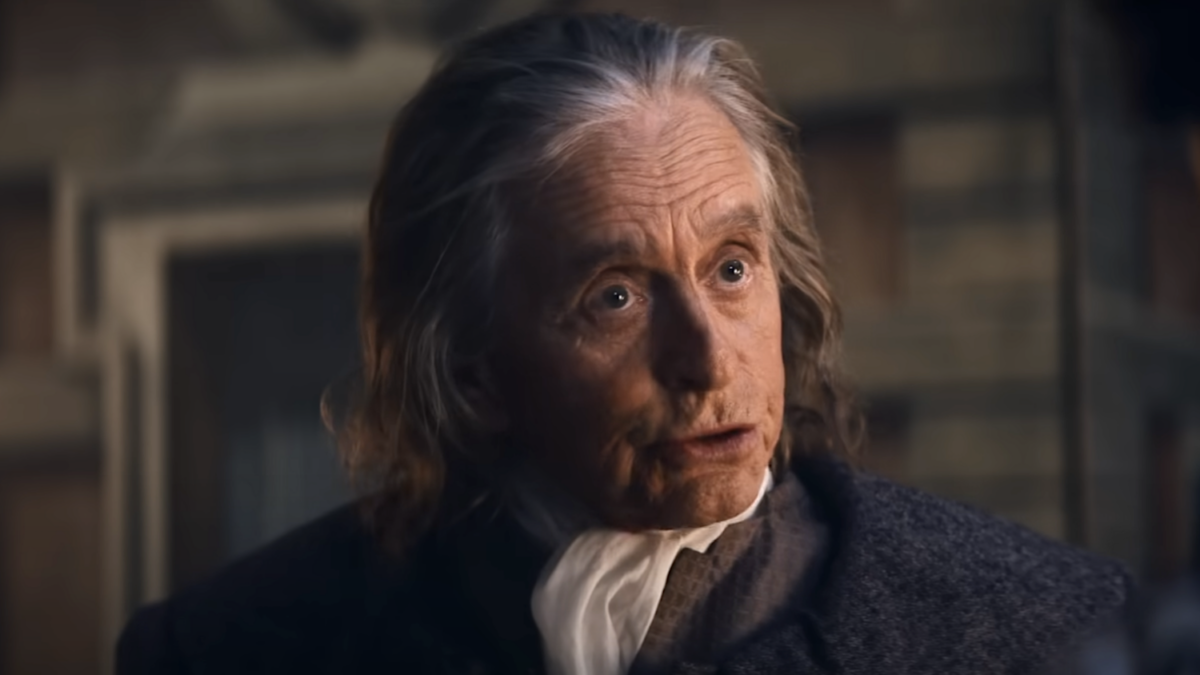
In fall 2011, ABC premiered a curious drama that drew viewers into a fusion of perilous legends, noble knighthood, female-centric soap opera, and fairytale magic, set in a modern-day small town in Maine full of secrets. Ultimately, “Once Upon a Time” ran for seven seasons, ending its run of more than 120 hours of television on May 18, 2018, three years ago this week.
The franchise from two producers of “Lost” became an ambitious experiment in world-building, testing the limits of the Magic Kingdom’s “follow your dreams” philosophy. It cast talented actors as recognized animated heroes (i.e. red-haired Merida from “Brave”) and villains (underworld ruler Hades from “Hercules”) alongside original characters that often serve as skeptical real-world foils entering this bigger story.

Ten years after its debut, “Once Upon a Time” has found new fans with its premiere on Disney Plus. Many families have engaged with that streamer’s weekly Star Wars and Marvel TV series praised as family-friendly with some caveats.
Between big-budget series, when little new is on Disney Plus, subscribers may want to give this show a try. The producers’ follow-up anthology series “Epic” arrives next year, so count on “Once” to remain in the pop culture spotlight.
But if you start, where does it go? As longtime Disney fans, my wife and I caught “Once” off-and-on during its TV run then rewatched most of it recently. Surprising twists and characters’ journeys are moving and provoking. The show’s rhythms have a simple charm, from swordplay shot in the forests of Vancouver, Canada, to earnest drama that affirms loyalty and forgiveness.
For families wondering what to expect, here are five insights into the story approach of “Once Upon a Time” that may help determine if this multi-season quest is one you want to undertake.
(Minor spoilers ahead.)
The Show Is About Reuniting a Broken Family
Ten-year-old Henry takes a bus across several states to find his birth mother Emma in Boston, compelling her to visit his adoptive mother Regina in Maine. This Hallmark-style inciting incident drives “Once Upon a Time.” Over many episodes, complex dynamics play out of feeling regret, learning trust, and finding home amid competing interests.
This poignant premise grounds a fantasy-adventure story that later gets unwieldy. Young Henry’s fate is uncertain because his family history finds its origin in a distant fairytale kingdom. Seemingly no one remembers the last three decades, and only his storybook holds any clues.
This set-up allows for a live-action take on “Snow White and the Seven Dwarfs” to intercut with current-day scenes of a bail bond agent catching a carjacker. The storytelling rewards patience as, gradually, most of it makes sense.
Imagine Well-Known Heroes and Villains All Together
From the first episode, when Snow White, Pinocchio, and Red Riding Hood among others assemble at an Arthurian round table to plot against an evil queen, it takes getting used to. Sci-fi conventions like timeline-jumping and alternate realities are only part of the equation in this souped-up revisionist fairy tale storytelling.
One family — young Henry and his two mothers — remains at the center. Yet the series leans into soap opera, wherein their convoluted family tree reveals as the cast of characters expands.
As someone who watched maybe 1.5 seasons of OUAT, I just fell down the craziest rabbit hole that started with googling 'Once Upon a Time Family Tree' and ended…… here…. pic.twitter.com/Cx4SbnPuY7
— Nicole Anell 🤖 (@nicoleanell) August 18, 2018
Later seasons get even stranger. Characters journey to interconnected kingdoms and realms — including Agrabah from “Aladdin,” Camelot, Arendelle from “Frozen,” Oz, and the Underworld from “Hercules” — that few would imagine in the same reality. If only to spot literary and Disney-movie in-references, it’s quite a trip.
Scares, Gore, and Romance Usually Stay PG
Purist fans of fantasy, science-fiction, and horror may find it off-putting that “Once” uses genre tropes without the explicit edge of iconic stories. For instance, the show’s “Frankenstein” take includes dark ideas like grave-digging but presented without the gore of most Mary Shelley adaptations. In another episode, some characters essentially become zombies, although without the violence and gore levels of “The Walking Dead.”
Unlike similar shows like NBC’s “Grimm” and Fox’s “Sleepy Hollow” that premiered around the same time, by and large, “Once” uses a sanitized, family-friendly approach (though some may find one plot device involving taking characters’ hearts disturbing). As to swordplay and other physical combat, it’s far from the intensity of “Game of Thrones.”
Dozens of romantic relationships develop throughout the show’s run, generally affirming the value of commitment and even marriage. Parents should note that one-night stands are sometimes implied, seen mostly in a first-season plotline. Later, a few minor characters reflect a LGBTQ reinterpretation of fairy tales — particularly in season seven, which many “Once” fans skip as it’s merely a reboot of the core concept with a new cast.
"They say a captain's heart belongs to his ship. But with this ring, it now belongs to you"- Captain Hook #OTP pic.twitter.com/lHgVeGDKWD
— Once Upon A Time (@OnceABC) August 3, 2019
High-Caliber Acting and Production Values
By now, it should be clear that “Once” demands an extreme suspension of disbelief and some will preemptively tap out. How does it work well enough to sustain 155 episodes? It’s due to a talented cast who go all-in on their performances, big-budget costume design that covers for less-than-believable CGI elements, and constant reinvention of season-long story arcs.
Show creators Edward Kitsis and Adam Horowitz pulled in a dozen stars from their sci-fi hit “Lost,” notably Lana Parilla whose dynamic character arc defines “Once.” Scottish screen legend Robert Carlyle portrays a conflicted dark antagonist. Jennifer Morrison (“House”) carries the Maine storyline while her parents Ginnifer Goodwin as “Snow White” and Josh Dallas as “Prince Charming” drive the swords-and-sorcery narrative that converges with the present day.

The writing also deserves praise, in part for subverting expectations in an authentic and satisfying manner. For instance, those who know J.M. Barrie’s “Peter Pan” and expect an adventurous protagonist will be surprised by this version. Even when a character’s past persona is “evil queen” or “dark one,” their backstory and possibility of redemption keep viewers guessing their moral choices.
It’s More About Moral Philosophy Than Magic
Undeniably, “Once” gets dark at times, with magic-users casting citywide curses and characters slain by mystical means. Yet villains who violate lives and freedom face tangible consequences — as stated in the show’s oft-repeated line: “All magic comes with a price.”
Scholars of fantasy fiction wax eloquent about “magic systems,” or what rules guide the use of enchanted elements in invented realms like Middle-Earth and Narnia. Similar to those tales, “Once Upon a Time” uses implicit magic where rules bend to serve story purposes; an overpowering villain can still be defeated by “true love,” no matter the situation. In a similar vein, show co-creator Horowitz called it “a show about hope … and happy endings.”
Thank you all for seven amazing years of #OnceUponATime ! pic.twitter.com/TF5HE11f3M
— Adam Horowitz (@AdamHorowitzLA) February 6, 2018
In its quests for other realms and even eternal life, “Once” seeks out the limits of a humanistic philosophy it ultimately upholds. As in the best speculative fiction, this fantasy-adventure series demonstrates the nature of justice, the struggle of resisting temptation, and the value of family in its multifaceted stories.
Certain episodes that veer off in bewildering directions can be skipped — and some families skip the entire Disney enterprise, for many valid reasons. Drawing on myths both classic and current, “Once Upon a Time” brings something fresh and heartfelt to serialized genre TV.









